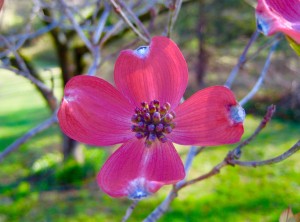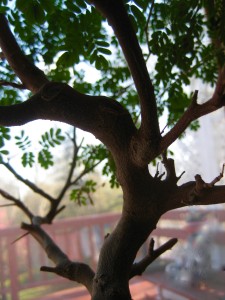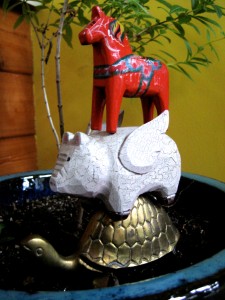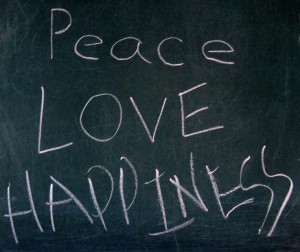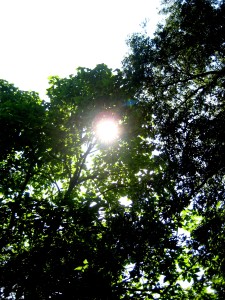On an individual level, the deepest question we can ask ourselves is, “Why am I here?” On a collective level, the deepest question we can ask ourselves is, “Why are we here?”
After years of focused exploration in the spiritual realm, seeking proof of and versatility in life beyond the body, I found myself drawn powerfully back into this world. I know my focus needed to first be in the spiritual world because I could not avoid exploring the question, “What comes next, is there life beyond this life?”
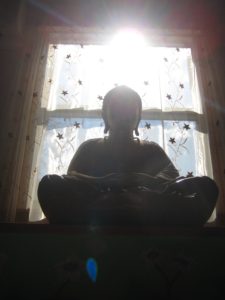
– Photo by Chuck Ketchel
Recently, however, I was drawn powerfully back to focus on life in this world. In fact, for the past several months I have been drawn to volume after volume of notes taken at Jung’s seminars in the 1920s and 1930s. I realize that the energy of now mimics the energy of that time and that Jung was thoroughly engaged in comprehending its questions and attempting to provide answers. Those questions were answered but not solved in his time. We live in the further unfolding of the seeds of that time and are asked, in our time, to provide the next evolution of answers.
The stakes are indeed much greater now. Though the horror of Hitler still hovers, it pales in significance to the threat of total world annihilation, which is the truth of our current predicament. To soften that blow I refer to a dream Jung had where he met a yogi in deep meditation. This yogi was, Jung realized, dreaming his, Jung’s, life. When he looked closer at the yogi he realized it was an exact replica of himself. He also realized that once the yogi awoke from his dream Jung’s life in this world would be over, though life itself would go on in another realm, in a another dream.
That is our predicament now, we are the collective participants of God’s dream. We are the incarnation of God’s dream. That makes us all, like Christ, God made human, set down in our collective world to freely explore the evolution of God’s dream.
Our world dream, Earth, has been an epic dream that has managed to never end because we, in the dream, have always found a way to keep it going, to both create and solve innumerable challenges that continue to evolve the dream. And it’s a beautiful dream, one we’d like to keep going!
In our time, we have forced this dream to epic challenges. Can we rescue ourselves from the clash of forces that scream out for a major evolutionary advancement? Hitler heralded an attempt to maintain purity of line at all costs. That motive has fully matured on the world stage at this very moment. Tribalism, purity of line, separation of races, religions, classes and sexes are all at war with the ultimate world melting pot that we must evolve into if we are to continue our dream on a more secure footing.
The truth is, God is indifferent to the outcome. Here I speak of God beyond incarnation, eternal God. For that God, whom we are the seeds of, all is forgiven because the outcome of our dream was left to us to freely and creatively grow and discover. That is how God grows. We are the creative side of God and we are here to discover things.
If this dream ends, God will not be angry or disappointed. God grows and learns regardless of the outcome. All outcomes are seeds of future eternal dreams. Nonetheless, this is a beautiful dream and it presents fascinating challenges.
From the perspectives I articulate here, I arrive at detachment. For me, detachment is merely having a fuller perspective that enables access to true solutions to problems. Detachment requires, however, that we fully suffer being in finite, human form. Only from that place can the true answers arrive. God outside time and space cannot provide the answers. Only incarnated God, in time and space, can provide the answers. And that’s us!
So, from inside the dream, feeling the full weight of endgame time, waking up now, I find that love in the form of suspending judgment appears as the clear resolution. To suspend judgment is to erase hierarchy; all are equally valuable, good, bad, and ugly. We are all necessary parts of the same whole. Each of us is necessary and vital, playing our unique part in the struggle to evolve the dream.
Love is embracing every aspect of the interconnected whole that we are, each of us trying desperately to solve the problem of a higher level of integration. And those that fight it the most must be loved and embraced for their role in forcing all of us to solve the issue our parent’s generation could only shelve.
It’s fully off the shelf now and WE MATTER, because without all hands on deck this dream will be shelved as the yogi comes out of meditation.
In meditation,
Chuck

